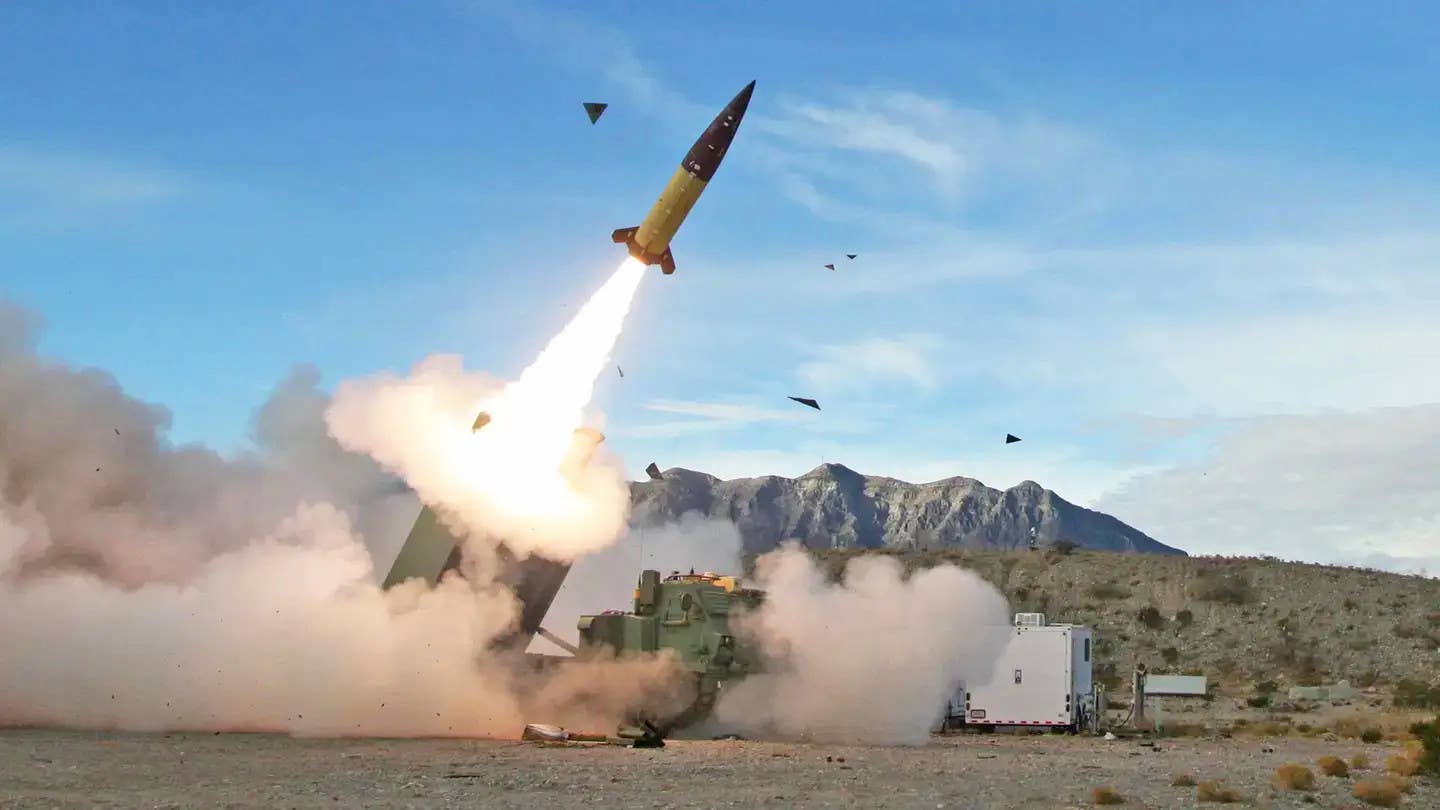With ATACMS’ replacement arriving very soon, one major argument against sending the ballistic missiles to Ukraine would lose its potency.

The pending arrival of the U.S. Army’s new Precision Strike Missile (PrSM) could reduce some of the readiness risks that are associated with a potential transfer to Ukraine of older Army Tactical Missile System (ATACMS) — the tactical ballistic missile that PrSM intends to replace — according to the U.S. Army’s top weapons buyer.
The Ukrainian government has been actively seeking ATACMS for many months. The weapon has a significantly greater range than most of its existing ground-based strike options and it hits much harder. However, U.S. officials have repeatedly demurred, often citing the small size of its stockpile of these strategically important munitions, among a number of other major factors.
Douglas Bush, the Assistant Secretary of the Army for Acquisition, Logistics, and Technology, talked about his service’s work on PrSM and the possibility of sending ATACMS to Ukraine to The War Zone and other outlets at a media roundtable earlier today. This comes as Ukrainian President Volodymyr Zelensky is in the United States, first for the U.N. General Assembly’s annual high-level week. He is set to meet directly with U.S. President Joe Biden, as well as members of Congress, later in the week, engagements where the matter of ATACMS is expected to come up again.
A Precision Strike Missile (PrSM). Lockheed Martin Lockheed Martin
U.S. decision-makers have to weigh “inventory versus potential military plans” when considering whether to transfer those ATACMS to Ukraine, the Bush said today. However, “as PrSM Increment 1 comes on, it might make it less risky from a readiness standpoint to provide some number” of ATACMS to the Ukrainian armed forces.
PrSM “of course is the missile we want to go to,” according to Army Assistant Secretary Bush. “It’s better than ATACMS. ATACMS are still a very good system, but that would be our goal.”
PrSM and ATACMS are both precision-guided short-range ballistic missiles designed to strike targets based on fixed coordinates. ATACMS can be fired by tracked M270 Multiple Launch Rocket System (MLRS) and wheeled M142 High Mobility Artillery Rocket System (HIMARS) launchers, examples of both of which Ukraine has already received, and PrSM is designed to be employed by those same platforms.
A US Army HIMARS launcher fires an ATACMS missile. US Army
There are multiple variants of ATACMS in U.S. and foreign military service today, including ones with cluster munition and unitary high-explosive warheads and with ranges up to 186 miles, as you can read more about here.
PrSM is the planned replacement for ATACMS in the U.S. military and the baseline version, also known as Increment 1, is set to have a maximum range of at least around 250 miles and to carry a unitary warhead. Other PrSM Increments with significantly increased range, the ability to hit moving targets, and other capabilities are expected to follow in the future, as you can learn more about here.
A PrSM missile is fired from an M142 HIMARS launcher during a test. DOD
It’s unclear how many ATACMS are currently in U.S. inventory across both the Army and the Marine Corps. Bush said today that the exact number is classified. Lockheed Martin, which makes the missiles and launchers, is known to have produced about 4,000 ATACMS in various configurations over the past two decades or so. This includes about 600 examples that U.S. forces fired in combat during the Persian Gulf War and the Iraq War and others that were sold to foreign countries, according to previous reports.
A story from ABC News earlier this month, which cited unnamed U.S. officials, said “the U.S. has found it has more ATACMS in its inventory than originally assessed,” but did not elaborate. Assistant Secretary Bush pushed back on this today.
“There was nothing found,” he said. “That implies that something was not kept track of and that was not the case. Of course, we know exactly how many we have [and] exactly where they are.”
Work is conducted on a US Army ATACMS missile. DOD
Why this matters is that, while President Joe Biden has been reportedly inching closer to approving a transfer of ATACMS to Ukraine, he has not done so yet. This is in no small measure because of concerns about having enough on hand in case the U.S. military needs them for a fight against a potential near-peer adversary like China or Russia.
The Biden administration has also cited fears that giving ATACMS to Ukraine could prompt a new and significant escalation on the part of Russian President Vladimir Putin, especially if the weapons are used against targets inside undisputed Russian territory. Assistant Secretary of the Army Bush declined to speak today about any potential limitations on Ukraine’s use of these missiles should it receive them, but said discussions about that were likely happening at the highest levels of the U.S. government.
Of course, any impact PrSM will have on the possibility of sending ATACMS to Ukraine will depend on the schedule for the fielding of the new missiles. When PrSM Increment 1 may begin to enter U.S. service is unclear, but an industry source with knowledge of the program separately told The War Zone today that deliveries are expected to start sometime next year.
No matter what, “if the decision’s made” to provide ATCAMS to Ukraine, “the Army is prepared to do that,” Bush said, adding no decisions have yet been made.
The forthcoming availability of new PrSM missiles may help remove at least one potential obstacle that has so far been keeping that decision to send ATACMS for Ukraine off the table.
Contact the author. howard@thewarzone.com.




